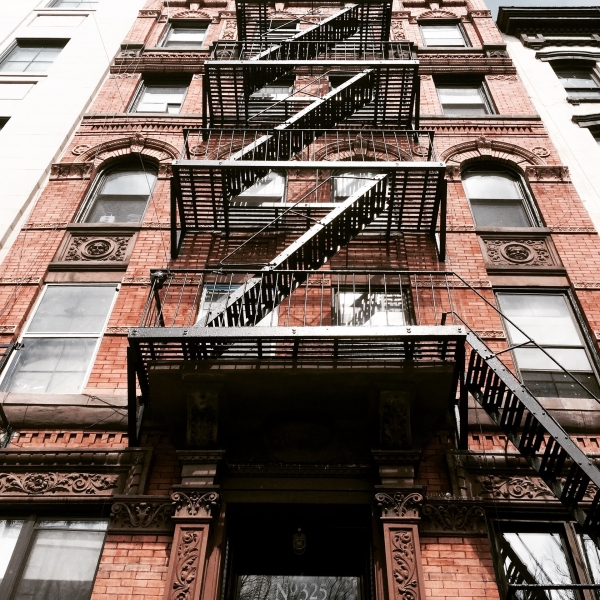Earlier this year, the New York City Council took a notable step forward in addressing common indoor environmental health hazards. The Council passed Law 2018/055, which amends the city’s housing maintenance code to require private landlords to prevent and remediate indoor asthma triggers in their multifamily residential buildings. In a city where over one-half of all dwelling units are occupied by renters, this new law has the potential to improve indoor air quality (IAQ) in the homes of millions of residents.
 The law requires owners to “take reasonable measures to keep the premises free from pests and other indoor allergen hazards.” These measures include conducting annual inspections for and remediating indoor allergen hazards and their underlying defects, and doing thorough cleaning to remove asthma triggers upon unit turnover. Owners will also have to notify tenants of their rights under the law (including how to report indoor allergen hazards).
The law requires owners to “take reasonable measures to keep the premises free from pests and other indoor allergen hazards.” These measures include conducting annual inspections for and remediating indoor allergen hazards and their underlying defects, and doing thorough cleaning to remove asthma triggers upon unit turnover. Owners will also have to notify tenants of their rights under the law (including how to report indoor allergen hazards).
The new law, which takes effect in January 2019, includes detailed provisions for addressing two common asthma triggers—pests and mold. A review of several studies concluded that up to one-half of U.S. homes have visible evidence of mold or dampness. The law requires the city to develop mold work practices, including certain specified measures. The law is also notable for not only requiring the elimination of pest infestations, but in mandating the use of integrated pest management (IPM) practices to minimize the use of chemicals in controlling pests. Importantly, the law directs the city to incorporate mold and pest infestation in its housing code inspections, train enforcement staff, and establish procedures for implementing the law.
The Impact of IAQ Problems
Advances in public health science have shed light on the health, productivity, and economic impacts of exposure to these and other indoor pollutants. For example, studies have found that the prevalence rates of adverse health effects associated with mold and dampness, such as asthma development, are 30% to 70% higher in homes with mold and dampness. Certain populations, including African Americans and those living below the poverty line, are disproportionately affected by asthma and at greater risk from indoor triggers.
Pests are also an important asthma trigger to be controlled in multifamily buildings. However, the use of pesticides may itself pose a risk if occupants are exposed to the chemicals through, e.g., inhalation or contact with the skin or eyes. The health effects of pesticides depend on the extent of exposure and the type of pesticide used, with potential effects including skin/eye irritation, harm to the endocrine and nervous systems, and cancer.
The good news is that there is considerable information and technical guidance on preventing and fixing IAQ problems from EPA and other nongovernmental organizations. Controlling moisture is the key to controlling mold and dampness, and IPM offers a well-established framework for preventing and safely eliminating pest infestation.
The Need to Address IAQ in Rental Housing Laws
With over one-third of U.S. households renting their homes, state and local rental housing policies can and should play a key role in improving housing conditions and public health. These policies are especially important considering that there are twice as many rental households below the poverty line as owner-occupied households; many renters will lack the resources to have problems fixed on their own or find alternate housing.
Unfortunately, most state and local housing codes and landlord-tenant laws currently do not include specific IAQ requirements. While some jurisdictions require notice to tenants of pesticide applications, few if any require IPM practices or similar precautions against chemical exposure. Provisions requiring landlords to address leaks and other moisture problems are fairly common and are important healthy housing standards. However, only a small number of states and localities address mold directly; without such explicit provisions, it can be difficult to encourage best practices to prevent problems and to take enforcement measures if a problem goes uncorrected.
New York City also joins other jurisdictions in addressing another important IAQ issue in rental housing—secondhand smoke. Along with several other states and localities, city law now prohibits smoking in common areas of all multifamily buildings, and requires those building owners to establish a clear smoking policy to be incorporated into tenants’ leases and any building rules or bylaws. A number of California municipalities have gone further, banning smoking in and around multifamily buildings. And at the federal level, the Department of Housing and Urban Development (HUD) has adopted a rule requiring all public housing agencies, by July 30, 2018, to adopt a smoke-free policy.
ELI has developed a variety of policy materials on IAQ in rental housing, including our recent Indoor Air Quality Guide for Tenants and an Indoor Air Quality in Rental Housing policy brief.
To see other ELI materials on indoor environmental quality and green building policy, visit our main program page at: www.eli.org/buildings.
